Biodiversity Loss
The Attenuation of the Biological World — Part 2
Biodiversity Loss: Crisis in Sustainability
 All these forms of anthropocentric trespass expedite the sick adrenalin rush of interest in every latest disaster, here today, replaced by another one tomorrow. News junkies thrive on bad news; bloggers wait breathlessly to spread the gossip; human-interest stories amid the chaos of melting icecaps, volcanic eruptions, other natural disasters from the tsunamis in the Indian Ocean to seismic shifts six miles beneath the waters off the coast of Haiti; not to mention more obscure problems, like a mid-air collision little reported upon at an astonishing 37,000 feet of altitude between a West African airliner over the Ivory Coast and a vulture, are all fair game for a voracious public whose children are growing up in the shadow of the most dangerous era in recorded history.
All these forms of anthropocentric trespass expedite the sick adrenalin rush of interest in every latest disaster, here today, replaced by another one tomorrow. News junkies thrive on bad news; bloggers wait breathlessly to spread the gossip; human-interest stories amid the chaos of melting icecaps, volcanic eruptions, other natural disasters from the tsunamis in the Indian Ocean to seismic shifts six miles beneath the waters off the coast of Haiti; not to mention more obscure problems, like a mid-air collision little reported upon at an astonishing 37,000 feet of altitude between a West African airliner over the Ivory Coast and a vulture, are all fair game for a voracious public whose children are growing up in the shadow of the most dangerous era in recorded history.
And just as we launch better, ever more precise technologies for observation, our collective unconscious is in ecological disarray; a mess that has not only failed to inhibit, but has actually expedited the loss of species — wild and domestic — at a rate of stunning tragedy. Nobody knows what to do. The British Petroleum accident is but one example of a truism hard to swallow for most, namely, that a president and his trusted cabinet members; a Nobel Prize-winning U.S. Secretary of Energy, governments in general are no longer up to the task of saving the global environment. The “Global 2000 Report” convened during the Carter Administration proved the point only two well that we are mired in a deeply-embedded cynicism that neither satisfies our need for wilderness and solitude (words written in to the first U.S. Wilderness Act) but are perpetuating a self-defeating fatalism when it comes to thinking about a viable future.
 The Club of Rome publication Limits To Growth by Donella H. Meadows, Dennis L. Meadows, Jorgen Randers and William W. Behrens III in 1972, following upon an essay in 1968 by the late ecologist Dr. Garret Hardin, “The Tragedy of the Commons” (*Science, 162[1968]:1243-1248) are now ascribed to by most students of ecological economics and sustainability (see Dancing Star Foundation video), along with the Malthusian premonition that our runaway population growth is clearly outstripping the earth’s non-renewable resources, her biological fundaments and her ability to revive herself. Those who have grown up with an orientation to spiritual ecology and animal rights would differ substantially from those in the scientific community who continue to call birds and mammals and other unique creatures “resources.” John Muir was horrified at such misuse of the language. A tree, he argued, cannot hide; it cannot run. Any fool can cut it down. It takes a tender heart, a wise soul to leave it be.
The Club of Rome publication Limits To Growth by Donella H. Meadows, Dennis L. Meadows, Jorgen Randers and William W. Behrens III in 1972, following upon an essay in 1968 by the late ecologist Dr. Garret Hardin, “The Tragedy of the Commons” (*Science, 162[1968]:1243-1248) are now ascribed to by most students of ecological economics and sustainability (see Dancing Star Foundation video), along with the Malthusian premonition that our runaway population growth is clearly outstripping the earth’s non-renewable resources, her biological fundaments and her ability to revive herself. Those who have grown up with an orientation to spiritual ecology and animal rights would differ substantially from those in the scientific community who continue to call birds and mammals and other unique creatures “resources.” John Muir was horrified at such misuse of the language. A tree, he argued, cannot hide; it cannot run. Any fool can cut it down. It takes a tender heart, a wise soul to leave it be.
While some will claim that the Earth is resilient, that natural disasters and extinction spasms, as well as the ebb and flow of temperatures and glaciers are the norm, only ecological illiterates would rally to the notion — and many have — that there is nothing to worry about. That human business as usual is the business of the planet.
Part 1: Lack of Conservation Progress
Part 3: The Importance of Conserving Animal Rights



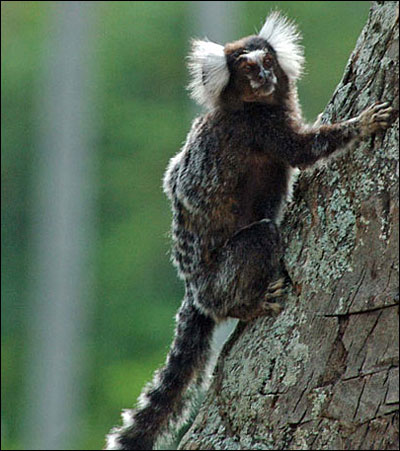 The Peruvian section of the DSF film “Hotspots” was motivated by the recognition that the Tropical Andes represent, in Dr. Mittermeier’s words, “the global epicenter of biodiversity because it has far more species than any other hotspot on the planet: 1,728 species of birds of which nearly 600 are endemic . . . 1,155 amphibian species thus far recorded…Reptile diversity, more than 600 species, mammal diversity nearly 600 species. So you’re getting an enormous concentration of animal life in the tropical Andes and plants are just off the charts. You’re looking at 30 to 35 thousand plant species in this hotspot, which is about one and a half million square kilometers . . . more than 10% of all the world’s plants and about 15,000 of those are endemic and found nowhere else. This area is just an endless array of valley and mountains and each valley is a barrier to distribution. So you’re getting an enormous turnover of different life forms as you go north or as you go south . . . a fabulous region, unlike almost anyplace else on our planet.”
The Peruvian section of the DSF film “Hotspots” was motivated by the recognition that the Tropical Andes represent, in Dr. Mittermeier’s words, “the global epicenter of biodiversity because it has far more species than any other hotspot on the planet: 1,728 species of birds of which nearly 600 are endemic . . . 1,155 amphibian species thus far recorded…Reptile diversity, more than 600 species, mammal diversity nearly 600 species. So you’re getting an enormous concentration of animal life in the tropical Andes and plants are just off the charts. You’re looking at 30 to 35 thousand plant species in this hotspot, which is about one and a half million square kilometers . . . more than 10% of all the world’s plants and about 15,000 of those are endemic and found nowhere else. This area is just an endless array of valley and mountains and each valley is a barrier to distribution. So you’re getting an enormous turnover of different life forms as you go north or as you go south . . . a fabulous region, unlike almost anyplace else on our planet.”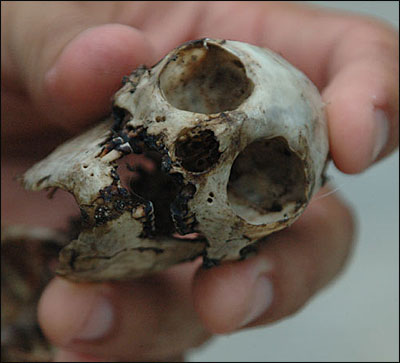 At the famed clay licks, DSF “Hotspots” film crews documented the daily parrot ritual, much debated as to its function in avian physiology. Thousands of parrots of diverse species feed on the clay which contains high levels of sodium that might be crucial to neutralizing the toxins in the birds’ normal diets. Other species, peccaries and monkeys, for example, also were filmed feeding on the claylick which may argue for a broader theory of the importance of sodium and the various dietary methods of combating its absence amongst many terrestrial vertebrates.
At the famed clay licks, DSF “Hotspots” film crews documented the daily parrot ritual, much debated as to its function in avian physiology. Thousands of parrots of diverse species feed on the clay which contains high levels of sodium that might be crucial to neutralizing the toxins in the birds’ normal diets. Other species, peccaries and monkeys, for example, also were filmed feeding on the claylick which may argue for a broader theory of the importance of sodium and the various dietary methods of combating its absence amongst many terrestrial vertebrates. DSF’s work in Yemen has been especially rewarding. Yemen as a whole presents a sobering profile. Her 21 million people are destined to exceed 71 million by 2050 at current trends. 74% of the nation is rural, male life expectancy a mere 59, females 63, with a daily income average of US$2.27.
DSF’s work in Yemen has been especially rewarding. Yemen as a whole presents a sobering profile. Her 21 million people are destined to exceed 71 million by 2050 at current trends. 74% of the nation is rural, male life expectancy a mere 59, females 63, with a daily income average of US$2.27.
 EBR or the Edhkwehlynawd Botanical Refuge (the “place from which a beautiful view is to be seen,” in the Toda, pre-Dravidian, language of Ahl) is a small parcel of private Trust land within this hotspot that harbors an educational and working scientific platform of great ecological and cultural importance. The EBR Trust was founded by Dr. Tarun Chhabra, an accomplished ecologist and a botanical specialist. Dr. Chhabra is one of the only people in the world, other than the Todas themselves, who speaks Ahl. With his associates, including the outstanding environmentalist Rami Singh, EBR has focused on helping the Toda to protect their traditional habitat, sustenance, agricultural gathering, and continue annual migrations with their sacred and endemic breed of buffalo. The fewer than 1,500 remaining Todas leave perhaps the lowest ecological footprint of any humans on earth (with the exception of Jain monks). Their knowledge of this hotspot goes back thousands of years, and their near universal vegetarianism and worship of buffalo and of nature, reveal a unique window on the human spirit and offer the hope of human sustainable communities in harmony with nature.
EBR or the Edhkwehlynawd Botanical Refuge (the “place from which a beautiful view is to be seen,” in the Toda, pre-Dravidian, language of Ahl) is a small parcel of private Trust land within this hotspot that harbors an educational and working scientific platform of great ecological and cultural importance. The EBR Trust was founded by Dr. Tarun Chhabra, an accomplished ecologist and a botanical specialist. Dr. Chhabra is one of the only people in the world, other than the Todas themselves, who speaks Ahl. With his associates, including the outstanding environmentalist Rami Singh, EBR has focused on helping the Toda to protect their traditional habitat, sustenance, agricultural gathering, and continue annual migrations with their sacred and endemic breed of buffalo. The fewer than 1,500 remaining Todas leave perhaps the lowest ecological footprint of any humans on earth (with the exception of Jain monks). Their knowledge of this hotspot goes back thousands of years, and their near universal vegetarianism and worship of buffalo and of nature, reveal a unique window on the human spirit and offer the hope of human sustainable communities in harmony with nature. 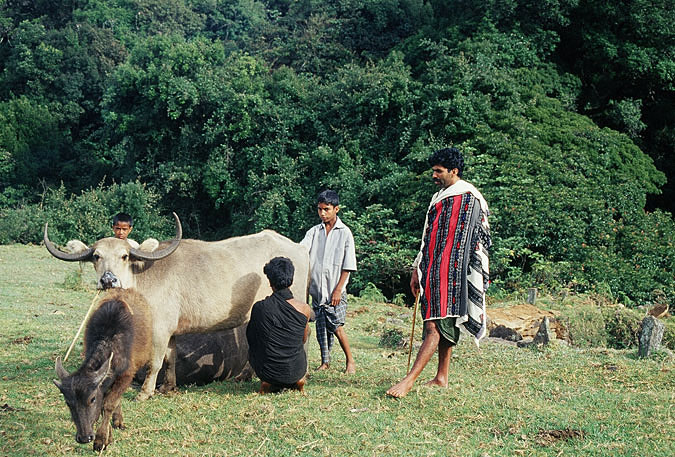
 Every creature will die, and the sanctuary movement, those working with shelters and struggling to help the millions of stray dogs and cats and countless other species know only too well the challenges; the deep love of a companion animal (as so sensitively portrayed in the film, “Marley and Me” (2008, directed by David Frankel and starring Owen Wilson, Jennifer Aniston and Eric Dane, based upon author John Grogan’s deeply affecting book by the same title) that is so often met with indifference by communities with other priorities. Yet, and not to wit, a poll some years ago showed that a majority of American women, if forced to make a choice, would take their pet dog over their husband.
Every creature will die, and the sanctuary movement, those working with shelters and struggling to help the millions of stray dogs and cats and countless other species know only too well the challenges; the deep love of a companion animal (as so sensitively portrayed in the film, “Marley and Me” (2008, directed by David Frankel and starring Owen Wilson, Jennifer Aniston and Eric Dane, based upon author John Grogan’s deeply affecting book by the same title) that is so often met with indifference by communities with other priorities. Yet, and not to wit, a poll some years ago showed that a majority of American women, if forced to make a choice, would take their pet dog over their husband.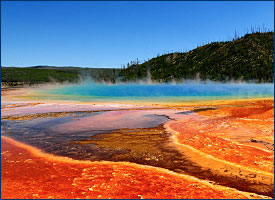 Engaging in both the protection of forests, as well as the individual trees, has been hard for many to reconcile. Add to this compounding dilemma of protections the unwieldy ecological footprint of 6.8 billion people, soon to become nearly 10 billion or more, with all of their consumer habits, and the options for environmental hope grow dimmer by the moment.
Engaging in both the protection of forests, as well as the individual trees, has been hard for many to reconcile. Add to this compounding dilemma of protections the unwieldy ecological footprint of 6.8 billion people, soon to become nearly 10 billion or more, with all of their consumer habits, and the options for environmental hope grow dimmer by the moment.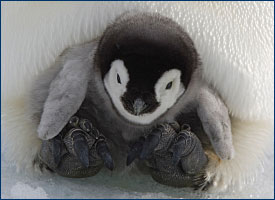 The conundrum could not be more serious, Recent polls suggest that among the American public some 60 percent do not take Global Warming seriously, let alone the extinction of tigers, Giant Pandas or penguins. They do not concern themselves with the fact at least 80 percent of all parrots are endangered, or that the United States legally allows for the import of more wild-caught species listed under international treaties (particularly CITES, the Convention on International Trade in Endangered Species of Wild Fauna and Flora) than any other nation. It is not surprising, therefore, that for every 100 American citizens, there are estimated to be 90 guns; that the U.S. National Park Service has recently consented to park visitors carrying (licensed) guns; that poaching is at an all-time high, translating into tens-of-billions of dollars per year and untold millions of animals and plants; that another 250 million animals end up as road-kill annually just within the United States; and that worldwide more than 53 billion vertebrates are slaughtered under unimaginably cruel circumstances every year (and that figure does not include fish).
The conundrum could not be more serious, Recent polls suggest that among the American public some 60 percent do not take Global Warming seriously, let alone the extinction of tigers, Giant Pandas or penguins. They do not concern themselves with the fact at least 80 percent of all parrots are endangered, or that the United States legally allows for the import of more wild-caught species listed under international treaties (particularly CITES, the Convention on International Trade in Endangered Species of Wild Fauna and Flora) than any other nation. It is not surprising, therefore, that for every 100 American citizens, there are estimated to be 90 guns; that the U.S. National Park Service has recently consented to park visitors carrying (licensed) guns; that poaching is at an all-time high, translating into tens-of-billions of dollars per year and untold millions of animals and plants; that another 250 million animals end up as road-kill annually just within the United States; and that worldwide more than 53 billion vertebrates are slaughtered under unimaginably cruel circumstances every year (and that figure does not include fish).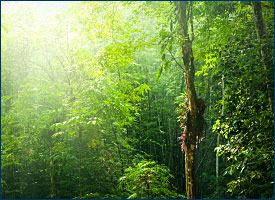 Most impressive of all, there are projections (up from 60,000 in 1998) that as many as 100,000 insect species inhabit every hectare of Yasuni. At the Tiputini Biodiversity Station, a 1,600-acre research center on the northern side of the national park, there are a known “247 amphibian and reptile species, 550 bird species and around 200 mammal species.” The park also contains underground oil reserves (wouldn’t you know it) and Ecuador is not a rich country although the current administration has vowed to protect the park. (*See Margot S. Bass, Matt Finer, Clinton N. Jenkins, Holger Kreft, Diego F. Cisneros-Heredia, Shawn F. McCracken, Nigel C. A. Pitman, Peter H. English, Kelly Swing, Gorky Villa, Anthony Di Fiore, Christian C. Voigt, Thomas H. Kunz. “Global Conservation Significance of Ecuador’s Yasun’ National Park,” PLoS ONE, 2010; 5 (1): e8767 DOI: 10.1371/journal.pone.0008767)
Most impressive of all, there are projections (up from 60,000 in 1998) that as many as 100,000 insect species inhabit every hectare of Yasuni. At the Tiputini Biodiversity Station, a 1,600-acre research center on the northern side of the national park, there are a known “247 amphibian and reptile species, 550 bird species and around 200 mammal species.” The park also contains underground oil reserves (wouldn’t you know it) and Ecuador is not a rich country although the current administration has vowed to protect the park. (*See Margot S. Bass, Matt Finer, Clinton N. Jenkins, Holger Kreft, Diego F. Cisneros-Heredia, Shawn F. McCracken, Nigel C. A. Pitman, Peter H. English, Kelly Swing, Gorky Villa, Anthony Di Fiore, Christian C. Voigt, Thomas H. Kunz. “Global Conservation Significance of Ecuador’s Yasun’ National Park,” PLoS ONE, 2010; 5 (1): e8767 DOI: 10.1371/journal.pone.0008767) The huge lingering question mark was posed many years ago by biologist E. O. Wilson, the world’s authority on ants (who recently turned to writing his first novel to explore the concept of free will, the brilliance of ants and their strange relationship to ungainly, bipedal, largely carnivorous creatures called Man). Wilson asked, “Is Man Suicidal?” in a cover story for the New York Times. Now we must reconsider the terror that he evinced in his provocative manner: if there is a God, is it patient enough to withstand one blow after another, caused at that very exact juncture wherein human beings partake of, but mostly exploit the natural world? One historian likened this syndrome to the British who were said to have backed their trucks up to the sub-continent of India and — true to Western biocultural imperialism — driven off with the goods. It was that simple. Similarly, 19th century settlers to New Zealand (like Utopian polymath Samuel Butler who leased a massive sheep station in Central Otago (eastern South island) named Mesopotamia (it still exists) and spent about four years in all making enough money to get back to Europe and make his career as a novelist, literary critic and photographer. New Zealand immigrants in the latter part of the 19th and early 20th centuries cut down more indigenous forest, in a shorter period of time, than in any other region on the planet. Today, many New Zealanders comfort themselves with what has become an advertising mantra, namely, “clean, green New Zealand.” It is not entirely true, though visitors from far more decimated parts of the world see New Zealand through happily rose-colored glasses and, in fact, New Zealand conservationists are among the most ardent, thoughtful and decisive environmentalists in the world. The same can be said of the countries growing animal rights constituencies, mostly on account of the organization SAFE (Save Animals From Exploitation) based in Christchurch.
The huge lingering question mark was posed many years ago by biologist E. O. Wilson, the world’s authority on ants (who recently turned to writing his first novel to explore the concept of free will, the brilliance of ants and their strange relationship to ungainly, bipedal, largely carnivorous creatures called Man). Wilson asked, “Is Man Suicidal?” in a cover story for the New York Times. Now we must reconsider the terror that he evinced in his provocative manner: if there is a God, is it patient enough to withstand one blow after another, caused at that very exact juncture wherein human beings partake of, but mostly exploit the natural world? One historian likened this syndrome to the British who were said to have backed their trucks up to the sub-continent of India and — true to Western biocultural imperialism — driven off with the goods. It was that simple. Similarly, 19th century settlers to New Zealand (like Utopian polymath Samuel Butler who leased a massive sheep station in Central Otago (eastern South island) named Mesopotamia (it still exists) and spent about four years in all making enough money to get back to Europe and make his career as a novelist, literary critic and photographer. New Zealand immigrants in the latter part of the 19th and early 20th centuries cut down more indigenous forest, in a shorter period of time, than in any other region on the planet. Today, many New Zealanders comfort themselves with what has become an advertising mantra, namely, “clean, green New Zealand.” It is not entirely true, though visitors from far more decimated parts of the world see New Zealand through happily rose-colored glasses and, in fact, New Zealand conservationists are among the most ardent, thoughtful and decisive environmentalists in the world. The same can be said of the countries growing animal rights constituencies, mostly on account of the organization SAFE (Save Animals From Exploitation) based in Christchurch.